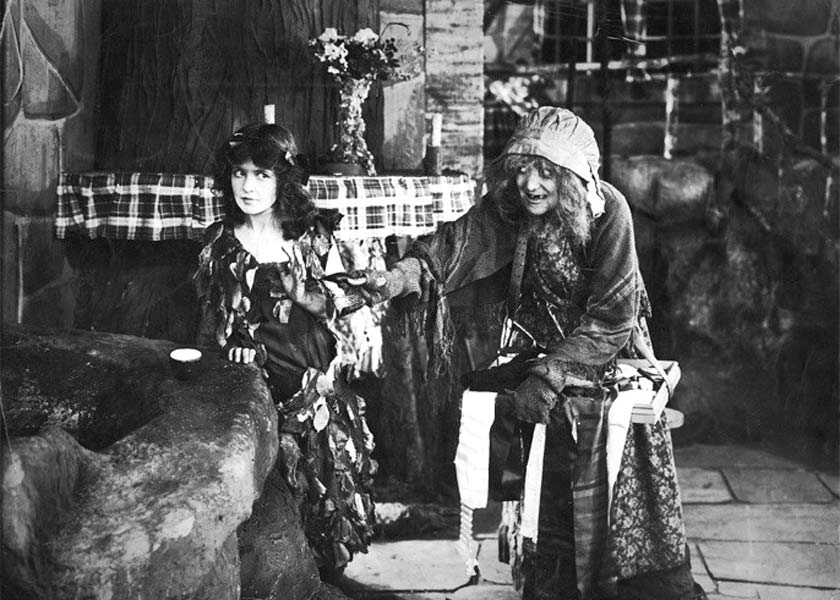Synopsis
Princess Snow White (Clark), threatened by her stepmother Queen Brangomar (Cumming), finds refuge in the cottage of the seven dwarves. The disguised queen tempts Snow White into biting the poisoned apple that puts her into a death-like sleep. Prince Florimond (Hale), who loves Snow White, and the dwarves think that she is dead. They carry her body to the castle and accuse the queen of harming her. At the castle, the piece of apple pops out of Snow White's throat, and she revives. The evil queen loses her beauty and goes away in shame. Snow White and Prince Florimond plan to marry and jointly rule their kingdoms.
Discussion
This charming film was the first feature version of the Brothers Grimm's Snow White story. Marguerite Clark had appeared on Broadway in the play Snow White and the Seven Dwarves, on which the film is based, in 1912. Winthrop Ames wrote both the play and the rather stagebound film adaptation. Clark, a delicate beauty, is a lively and delightful Snow White. She began her career on Broadway in 1900 and Snow White and the Seven Dwarves was one of her final stage appearances. She entered films in 1914 as feature-length filmmaking was becoming popular. She married in 1919 and retired in 1921. Few of her films are known to survive.
Creighton Hale, who played Prince Florimond, also entered films in 1914. Prominent in during the silent era, his career continued into talkies, mostly as an uncredited extra. He made his last appearance in 1959.
Walt Disney was fifteen years old when he saw this film (at a special screening in Kansas City that projected the film simultaneously on four screens), and Disney later said it impressed him enough to influence his choice of the story for his first feature-length animated film: Snow White and the Seven Dwarfs (1937).

